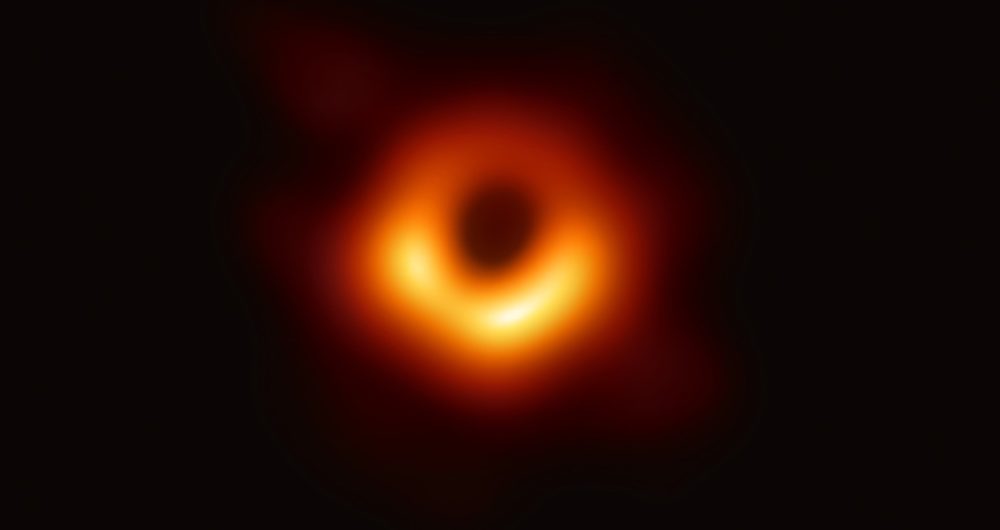Astronomers have captured the first image of a black hole.
The picture shows a halo of dust and gas, tracing the outline of a colossal black hole, 55 million light years from Earth.
It also gives the first direct glimpse of a black hole’s accretion disk, a fuzzy doughnut-shaped ring of gas and dust that steadily “feeds” the monster within.
The black hole itself is a cosmic trapdoor from which neither light nor matter can escape. But the latest observations take astronomers right to its threshold for the first time, illuminating the event horizon beyond which all known physical laws collapse.
Event Horizon Telescope Director and Harvard University senior teacher Sheperd Doeleman said: “Black holes are the most mysterious objects in the universe. We have seen what we thought was unseeable. We have taken a picture of a black hole.”
The EHT picks up radiation emitted by particles within the disc that are heated to millions of degrees as they swirl around the black hole at close to the speed of light, before vanishing down the plughole.
Black holes are so small, dark and distant that observing them requires a telescope with a resolution equivalent to being able to see a bagel on the moon. This was once thought to be an impossible challenge.
The EHT achieved the necessary firepower by combining data from eight of the world’s leading radio observatories, including the Atacama Large Millimetre Array (Alma) in Chile and the South Pole Telescope, creating a useful telescope the size of the Earth.
The success of the project hinged on clear skies on several continents simultaneously and excellent coordination between the eight far-flung teams. Observations at the different sites were coordinated using atomic clocks, called hydrogen masers, accurate to within one second every 100 million years.
Image Source:The Havard Gazette




